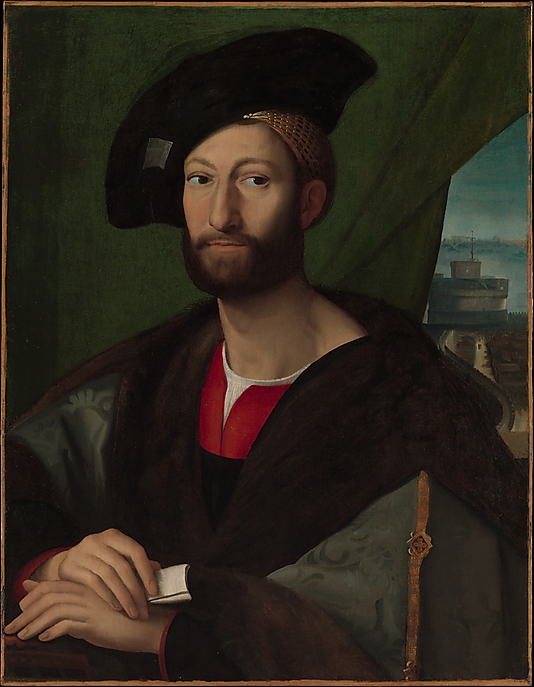If the Middle Ages was the age of faith, it gave way to what can be described as an age of curiosity. The Renaissance. Facts that things existed no longer was an assurance that it had a place in an all-inclusive system, where all universal clutter could fit into a systematic harmony that already existed. But, Renaissance man sought to discover new harmony, more “terre a terre” with himself occupying the center.

Metropolitan:This painting is an early copy of a portrait by Raphael of Giuliano de Medici, Pope Leo X’s younger brother. Giuliano sat for his portrait so that it could be sent to Philiberte of Savoy, the aunt of Francis I of France, to whom he had become engaged. As the couple had not yet met the portrait gave her an idea of his appearance. The match was a political one. Pope Leo was hoping to cement the alliance between the French and the papacy. Portraits were often included in the diplomatic arrangements of such dynastic marriages. click image for source…
The result of all this curiosity, this spiritual affinity with antiquity of Greece and Rome was a reviving of idealism mixed with new knowledge which meant a cultivation of dignity, elegance, grace and intellectualism. An example of this new esthetic would be Raphael’s Guiliano de’ Medici, Duke of Nemors, a wildly successful exercise that had little to do with the sitter’s personality and much about investing in him the qualities the age most admired. In a way, that template is still with us, the permeating of figures with qualities extraneous to the individual but intrinsic to what we feel captures the essence of the moment.
In late medieval art like Van Eyck, the forms are complicated andthere is an intesification of detail and in Raphael everything is simplified including a di-vesting and elimination of detail to arrive at an ideal pushing the limitations of preserving an adequate likeness. But with Raphel, forms are not only simplified: there is a beauty in the order, an effort to clarify meaning perceived to be previously obscured by complication, an intensity of detail that characterized medieval art.





 COMMENTS
COMMENTS